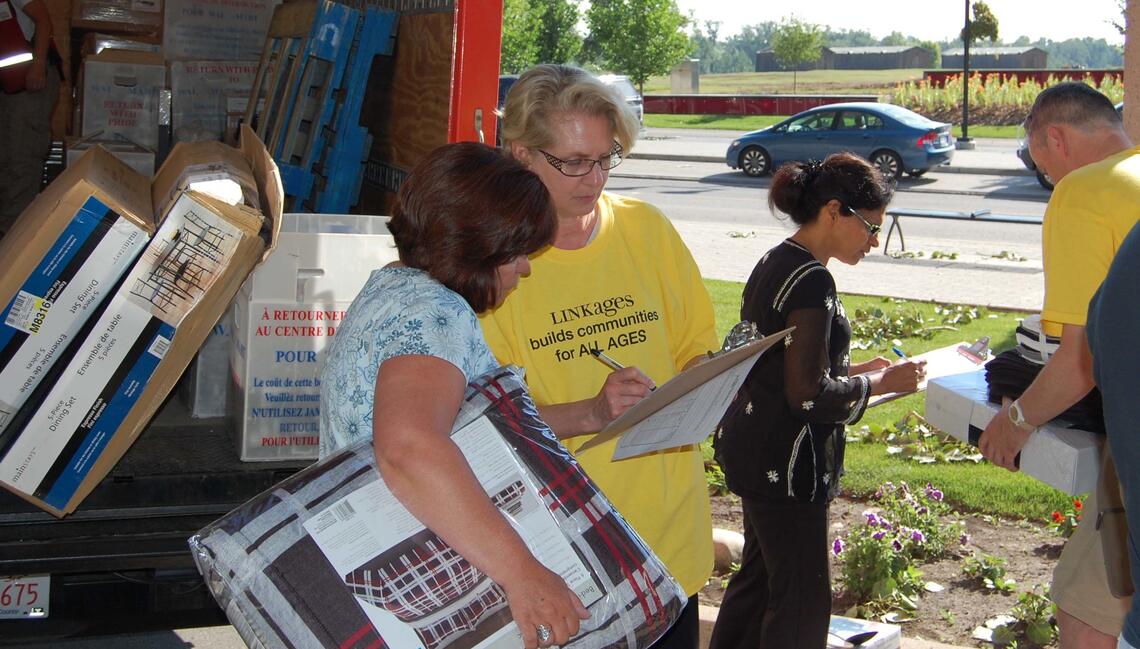
June 15, 2023
On Calgary’s 10-year flood anniversary, businesses are more ready
It’s hard to fathom it today, but 10 years ago (June 20, 2013) downtown Calgary was inundated by raging flood waters, just one of 32 flooded areas within the city as torrential rain caused the Bow and Elbow rivers to rise, spilling devastation across the landscape and delivering a blow to Calgary’s booming business community.
In the downtown core alone, 3,000 buildings were flooded and 4,000 businesses were severely impacted. Along with those in the downtown area, businesses in the neighbourhoods of Victoria Park, Inglewood, Mission and Kensington were forced to close, some for a few days, others for several months. And then there were those that were washed away permanently. According to a survey by the Calgary Chamber, four in 10 of its members were affected, reporting lost sales and, in many cases, the closing of offices. The economic impact in Calgary was estimated at more than $200 million.
Business continuity crucial
“In moments of such crisis, a company’s disaster response – its business continuity plan – is of crucial importance,” says Dr. Anne Kleffner, PhD, a professor of risk management and insurance in the Haskayne School of Business. “Very often, and certainly during the flood, a business’s ability to shift to a remote working model becomes crucial. How well were companies set up to work from home, or remotely, during the flood? In many cases, not very well at all. It was a wake-up call for many businesses.
“And this came up again during COVID.”

UCalgary students, faculty and staff volunteered to support the flood-relief effort.
UCalgary archive
Harsh lessons of COVID
All too many Calgary businesses had forgotten the lessons of the flood when the COVID-19 pandemic forced several seasons of social isolation on us all, says Dr. Thomas O’Neill, BA'05, PhD, an industrial organizational psychologist in the Department of Psychology. It soon became clear that implementing a flexible business model, wherein employees were equipped to work from their homes, wasn’t a luxury. It was a necessity.
“Some businesses had a harsh reminder when COVID rolled around,” says O’Neill. “They had to relearn the work-from-home model fast. More than ever before, the pandemic revealed the importance of that business continuity plan.”
While it’s hard to find a silver lining in COVID, there’s a strong case to be made that Calgary’s business community would be better prepared if the city were to flood again today. That’s because the pandemic forced businesses to fully entrench remote-working capabilities into their business continuity plans.
“During both the flood and COVID, some firms were far better positioned than others because they had established a hybrid work program.”
Those that did not faced challenges that, for some, bordered on ruinous. “Imagine all these oil and gas companies headquartered downtown,” says O’Neill. “If you couldn’t get to your office and you couldn’t access your computer files, work stopped. Meanwhile, they’ve got drilling going on and organizational safety issues. It must have been horrible. Talk about getting caught with your pants down.”
Pressures to work from home
But are the lessons of crisis now permanently embedded? O’Neill notes that an increasing number of executives and CEOs are pushing back against the hybrid work models established during COVID, and instead want their employees back in the office full-time. Now accustomed to the work-life balance of the hybrid work schedule, many employees are resisting the move.
Perhaps these businesses are again forgetting the business continuity case for maintaining the hybrid work model, suggests O'Neill. “There will be another pandemic and there will be another flood,” O’Neill says. “This is contingency planning. It’s crisis-management. And employees want it anyway, so it should be a win-win.”
Ready for the worst
Dr. Alice de Koning, PhD, a professor of entrepreneurship at the Haskayne School, agrees. “The flood was a reminder that businesses have to consider extreme possibilities,” she says. “And we no longer believe in the ‘hundred-year flood.’ With climate change, we don’t know how often these floods are going to happen.”
While the ability to work remotely is indeed essential for businesses, de Koning also warns against the pitfalls of a workforce that becomes too isolated.
“Another aspect of risk-management is in the strength of a community.”
“Think of all these business associations that exist. It sometimes seems like all they do is go for coffee, but those relationships really kicked in during the flood. Businesses that weren’t devastated stepped up for the larger business community. ‘How can we help? Can we offer desks to companies that were flooded? Can we bring the employees coffee and food?’
“The ability to make that shift and work from home is important, but we must not forget the community piece. These networks and relationships are also critical to a business’s resiliency.”

University of Calgary students study the geological effect of flooding on the Bow River at the 2013 Geo-Science Field School.
UCalgary archive







